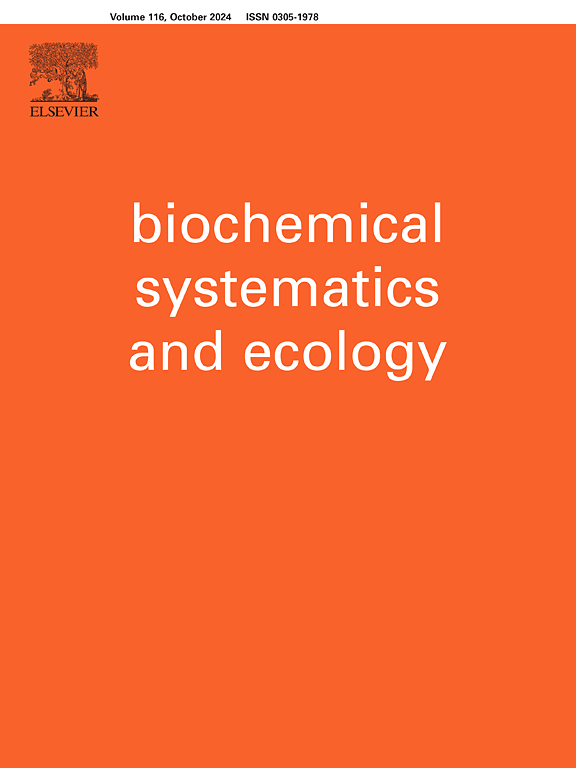Seasonal variations in the phenolic compounds and antioxidant activity of Pyrrosia petiolosa (Christ et bar.) Ching
IF 1.4
4区 生物学
Q4 BIOCHEMISTRY & MOLECULAR BIOLOGY
引用次数: 0
Abstract
Pyrrosia petiolosa (Christ et Bar.) Ching is an evergreen fern, its dried leaves serving as one of the sources of the traditional Chinese medicine “Shiwei”, which can be used to treat acute pyelonephritis, chronic bronchitis, and bronchial asthma. In this study, the leaves of this plant were harvested from January to December, and ethanol extracts of trophophylls (EET) and sporophylls (EES), and hot water extracts of trophophylls (HET) and sporophylls (HES) were prepared. Extracts were evaluated for seasonal changes in the contents of chlorogenic acid (CGA), neochlorogenic acid (NCGA), total phenols (TP), and total flavonoids (TF), as well as their antioxidant activity. The results showed that from spring to winter, the levels of CGA, NCGA, TF, and TP in the leaves of P. petiolosa exhibited an overall trend of first decreasing and then increasing, although the degree of change varied. In the spring and summer months, specifically from March to June, the leaves contain rich phenolic compounds and had high antioxidant activities. Moreover, the ethanol extracts from the leaves collected in spring exhibit the best antioxidant activity. Overall, it is suggested that spring is the optimal harvesting season for P.petiolsa, followed by summer.
求助全文
约1分钟内获得全文
求助全文
来源期刊

Biochemical Systematics and Ecology
生物-进化生物学
CiteScore
3.00
自引率
12.50%
发文量
147
审稿时长
43 days
期刊介绍:
Biochemical Systematics and Ecology is devoted to the publication of original papers and reviews, both submitted and invited, in two subject areas: I) the application of biochemistry to problems relating to systematic biology of organisms (biochemical systematics); II) the role of biochemistry in interactions between organisms or between an organism and its environment (biochemical ecology).
In the Biochemical Systematics subject area, comparative studies of the distribution of (secondary) metabolites within a wider taxon (e.g. genus or family) are welcome. Comparative studies, encompassing multiple accessions of each of the taxa within their distribution are particularly encouraged. Welcome are also studies combining classical chemosystematic studies (such as comparative HPLC-MS or GC-MS investigations) with (macro-) molecular phylogenetic studies. Studies that involve the comparative use of compounds to help differentiate among species such as adulterants or substitutes that illustrate the applied use of chemosystematics are welcome. In contrast, studies solely employing macromolecular phylogenetic techniques (gene sequences, RAPD studies etc.) will be considered out of scope. Discouraged are manuscripts that report known or new compounds from a single source taxon without addressing a systematic hypothesis. Also considered out of scope are studies using outdated and hard to reproduce macromolecular techniques such as RAPDs in combination with standard chemosystematic techniques such as GC-FID and GC-MS.
 求助内容:
求助内容: 应助结果提醒方式:
应助结果提醒方式:


